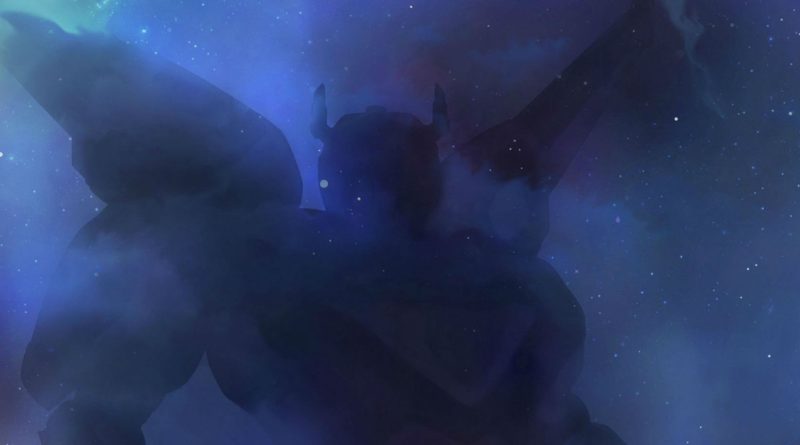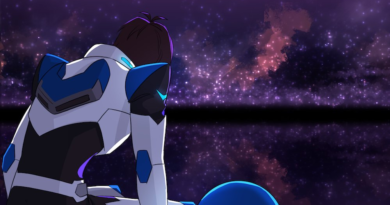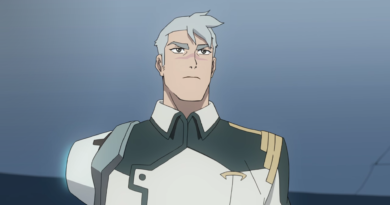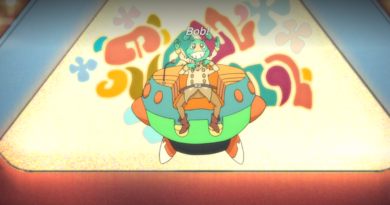Voltron and the Hero’s Journey through the Major Arcana of the Tarot
Note: The following article contains original research and writing by a Guest Contributor.
A note from Team Purple Lion: Section 20: Judgement discusses the symbolism of the card and its implications in the story. To illustrate this component of the analysis, a screenshot of the interior of the Sincline ship with Lotor inside is utilized. Reader discretion is advised.
«The journey of the hero is the oldest story in the world. As the basic structure, it is woven into myths, fairy tales and legends that tell us how a person sets out to accomplish the great work. It is the story behind all these stories, which to this very day are always told in the same way under countless names in all languages and cultures over and over again.
<…>
The journey of the hero is the archetypical pattern of a range of actions woven from these primordial images. This is why, despite its many variations, the journey and the image are always so strangely familiar to us. They always tell of the quest, the adventurous search for the treasure that is hard to find, and are composed of elementary components.
<…>
Yet, as often as this story has been told, as many collections of fairy tales and myths as it may fill, only once has it taken on a complete form as a whole in pictures – and this is in the 22 tarot cards of the major arcana. However, not only are the archetypical events illustrated in these motifs, many connections between individual stages become transparent in the structure of the cards. Their meaning for our path in life becomes comprehensible on the deepest level»
© «Tarot and the Journey of the Hero» by Hajo Banzhaf, Brigitte Theler, Christine M. Grimm
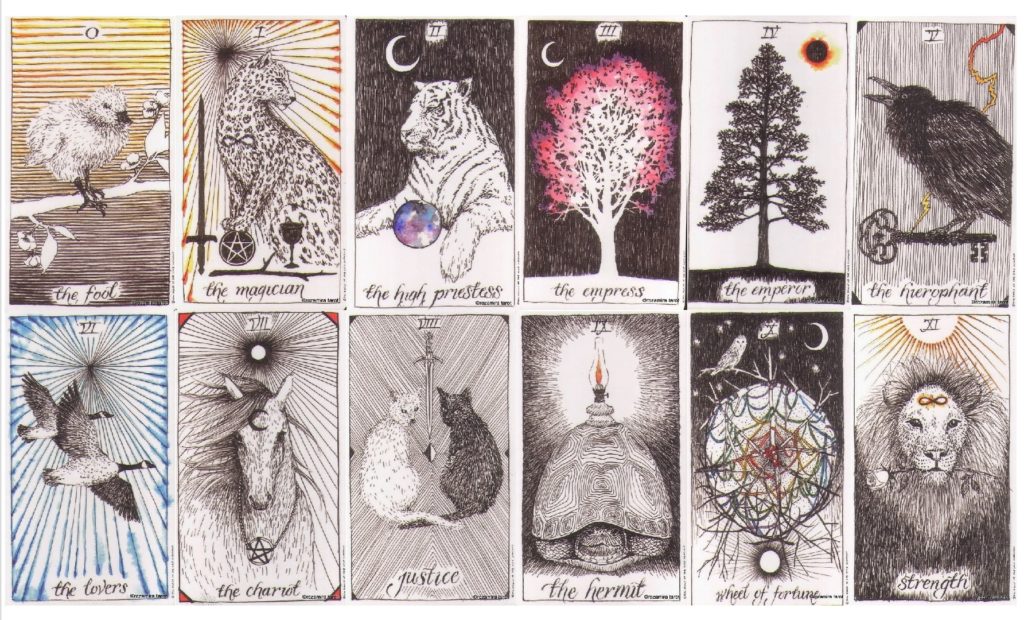
0. The Fool
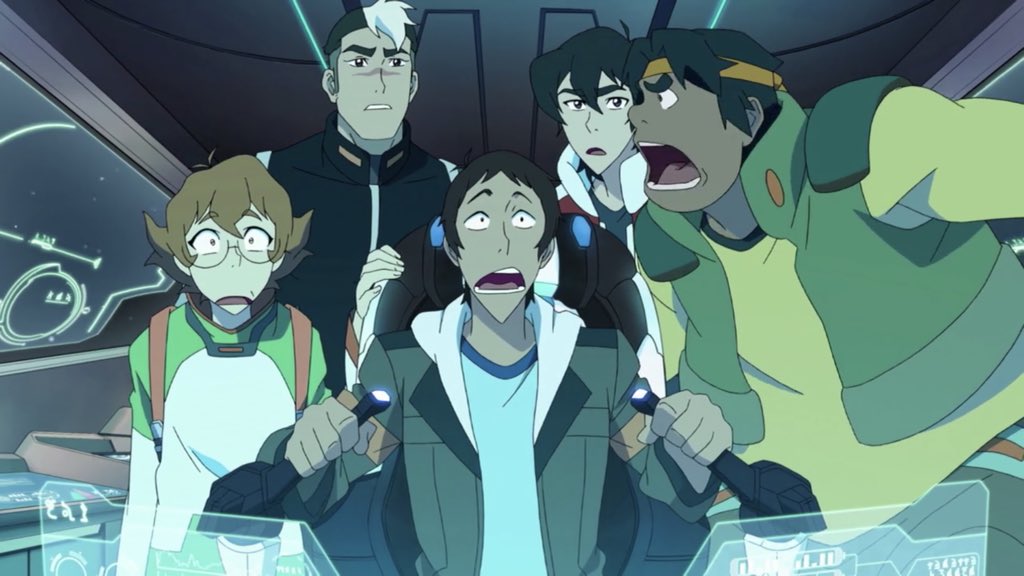
The very beginning of the story, but by no means the moment since the beginning of the first episode. The story comes to its first stage when the future paladins, and for now completely unaware guys from the Garrison, get inside the Blue Lion and go into the unknown. The Fool depicts a person taking a step into the abyss. The one who doesn’t know where he or she’s going. The one who doesn’t know whether they’ll fall, whether they’ll step on a new ledge or take off. This person simply performs a somewhat thoughtless action – and sets off.
Then the paladins get to the Castle of Lions. There they meet another new phenomenon – literally a new race. Their consciousness expands when they learn that there are other races, other planets, that war is going on in space.
The Fool depicts the unknown, events when a person can’t even imagine what awaits him or her next. And so the paladins – they have no idea what awaits them further.
Also, many of them don’t have the necessary skills, and absolutely for everyone the piloting of Lions is absolutely new.
At the very first stage, they still don’t learn anything, they just try to do something, in the hope that it’ll work out.
Our heroes don’t yet have an idea of what purpose they have. But they will know this. Later.
1. The Magician
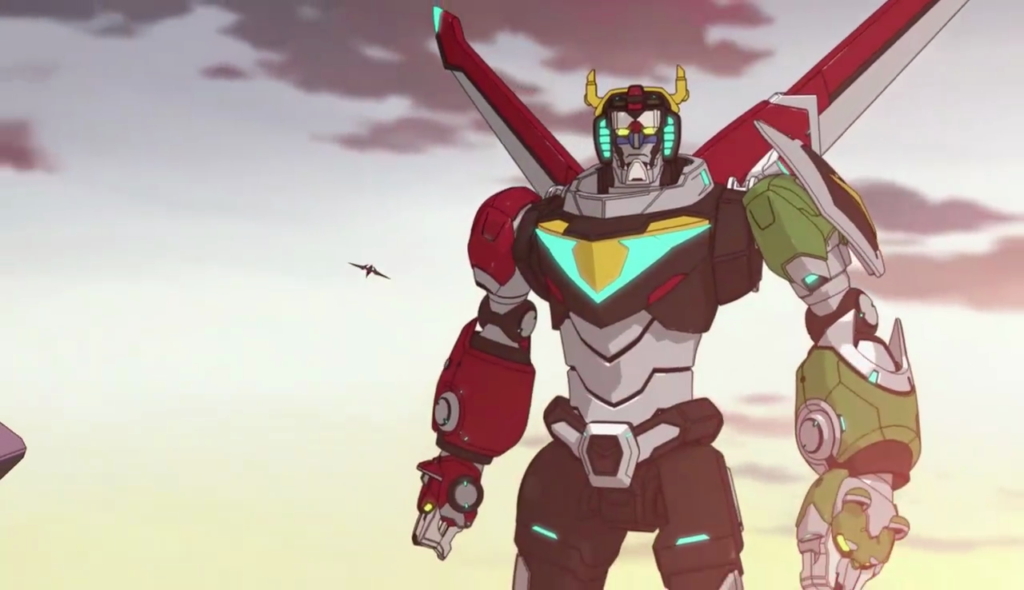
The second stage of the path and development of the paladins.
The Magician depicts a person that considers him/herself practically immortal and god-like. A person that is capable of a lot, the one who has an unlimited number of talents (the paladins definitely have individual talents) and thinks the whole world as one big playground. The main problem is that in spite of all the abilities and power, this person isn’t omnipotent and won’t end well without a proper training.
Paladins follow the path of The Magician, gradually mastering Voltron, starting to reap the benefits of their actions. They help, they save, they do a lot, they move their own way and, obviously, consider themselves the real saviors of the universe. They don’t know yet that their power will end where the strength of someone else begins.
2. The High Priestess
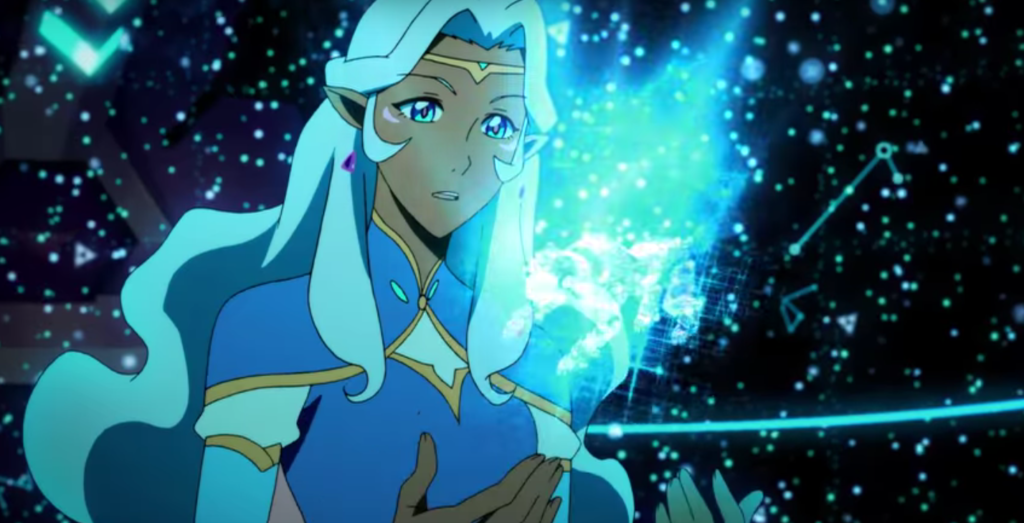
In the events of the series, The High Priestess finds several manifestations at once.
The High Priestess herself carries mystical experiences, secret knowledge, secrets that are carefully hidden, but will still emerge in the end. It has many meanings, but we need only a few.
The first correspondence to this card is Allura, possessing the gift of Altean magic, which is hidden deep inside her. We remember this from the episode when she gave new life to Balmera. But this moment will reveal itself later. In another archetype.
At this point, it’s only the power itself napping in Allura. She remains aloof from the battles of the paladins, maintaining a more passive position. Her potential is hidden inside, waiting in the wings. And it will come.
The High Priestess card is constantly revealed in the plot. Through secrets that pop up unexpectedly. For example, through a story about the past of Zarkon and the Galra.
In my personal opinion, this can also be attributed to the moment when the paladins decided not to act «in advance», but by some cunning, using Teludav. The secret may be the meeting of Keith, Hunk and Acxa inside the stomach of the Weblum, as no one knows Acxa yet. As well as revealing that Haggar is an Altean. She also fits the archetype of The High Priestess, but not as much as she fits the card that’ll be shown next.
3. The Empress
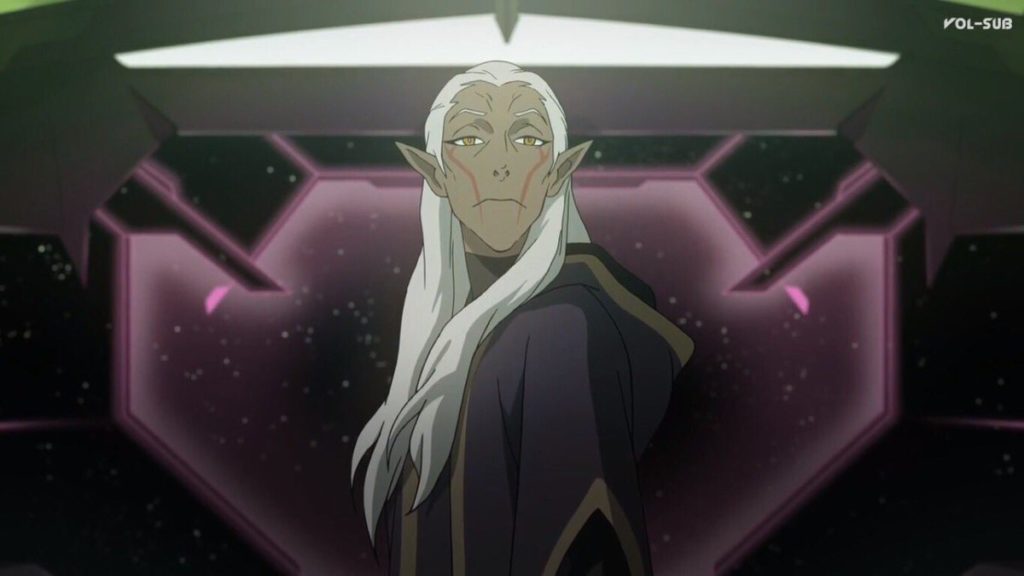
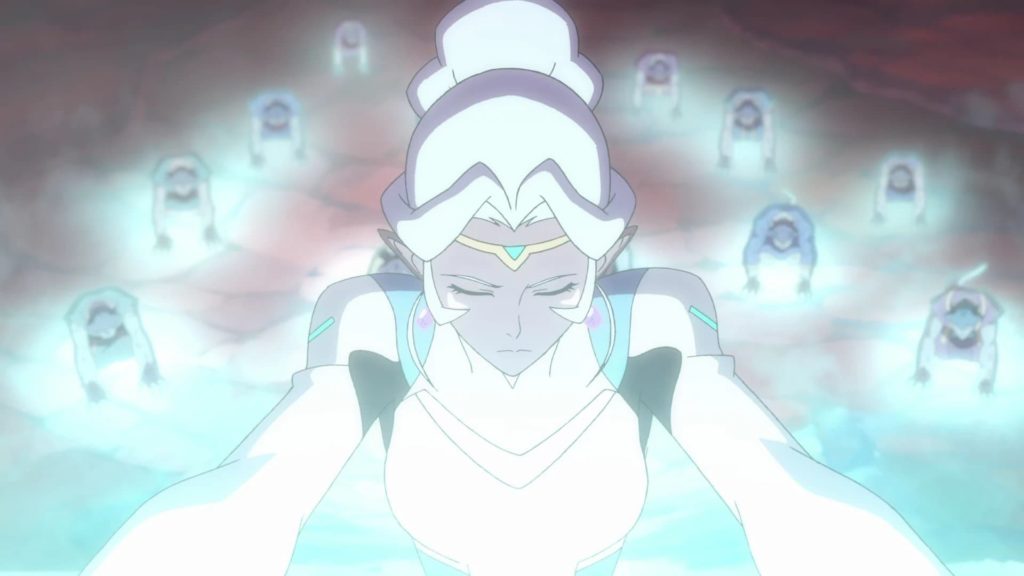
The archetype of The Empress is the archetype of Mother. The Mentor and the one who cares, who is willing to help. She is the inexhaustible source of all life, our creativity and our ability to embody something. But it is also a development of the situation, a period of abundance and good luck.
And this is again the archetype of Allura. However, she manifests herself as The Empress not so often as the plot requires. However, this is her arc of personal growth. It should be so.
The most important manifestation of her as The Empress, which can even be called the first, is the healing of Balmera. It was then that power began to awaken in her, which in the future would make her the real Empress, which would give her a lot. Moreover – in the future she’ll show herself as The Empress… with the help of Lotor. Because the Empress always needs the Emperor nearby.
In terms of the plot itself, these are all those moments when the paladins conceptualize something, when they seriously think about what’s happening. But the most important thing is a period of abundance for them, a period when they succeed and it seems that it will always be this way.
The highest manifestation of The Empress is Honerva. She’s both a mother and a ruling figure, who rules from the side, as if from a shadow. She has the power to create and great talents. After all, she’s a scientist. Exploring the matter that the Empress represents is her work. Also, in the future she’ll literally possess unprecedented power, Altean magic. As Haggar, she’ll still remain the Empress, but turned into a negative, like the inverted position of this card. The inverted Empress is a trick, a desire to rule over men, such a woman doesn’t care about her children and her family. A great embodiment of the archetype in action.
4. The Emperor
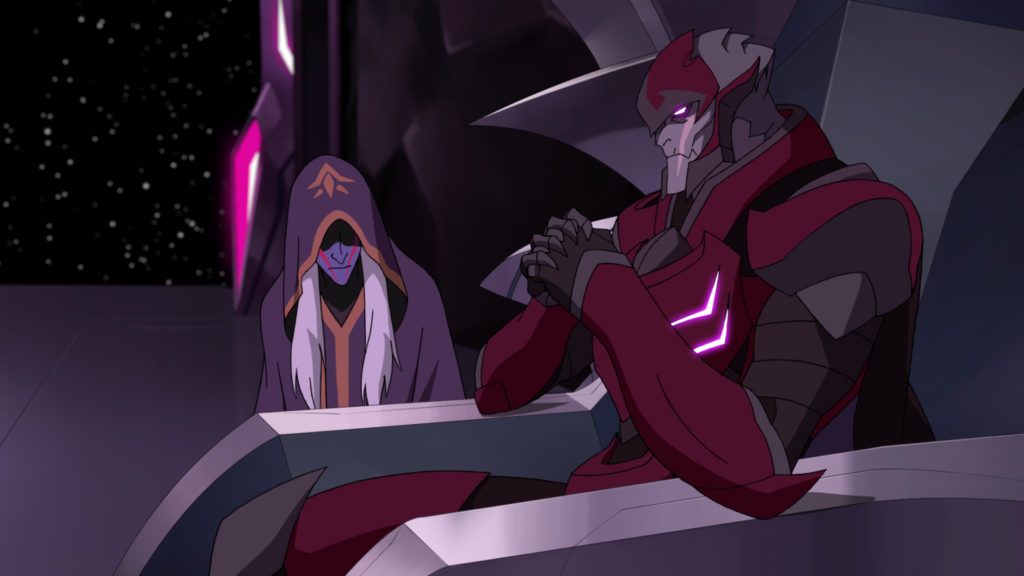
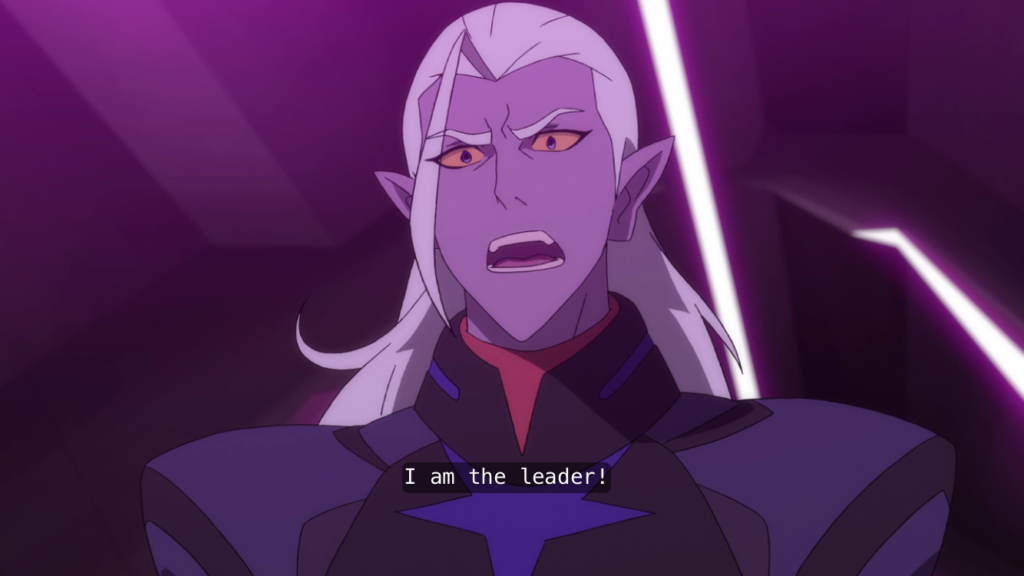
Under the card of The Emperor are all the rulers, people who have power, as well as those who adhere to serious rules and restrictions. Also, under this card are those who are ready to fight to the end, until their death. Those who have a certain cruelty and coldness. The Emperor is a regime and system that erases those who don’t correspond to it. He’s conservative and adamant, and it’s not easy to appeal to his heart, despite the fact that he’s inclined to impose his point of view, to teach and control. He suppresses any rebellion in the bud.
In other words, we smoothly come to the fact that the entire race of the Galra, in the form that it exists in most of the episodes, goes under the card of The Emperor. They have strict rules, many, even the most insignificant offenses are punishable by death, and their system works like a clock under the control of their ruler. The leader’s word is the law, the one who doesn’t respect the leader will meet his end. Stability is also part of their lives. Their emperor didn’t change for more than ten thousand years. They’re used to it. They’re used to a lot of things.
And then we go to the obvious personification of the archetype of The Emperor. That’s right, to Zarkon. He’s so consistent with this card. Not only is he literally an emperor in his empire, but if before the Rift he was just a serious ruler, a leader capable of holding everything in his hands, then he combined the worst features of the Emperor. He’s a despot and tyrant who doesn’t care about others. He only adjusts everything for himself – with the help of his Empress, Haggar. He strives for even greater power, crumbles under himself everything that meets in his way. Races, planets, his own kind, his own son.
I must say, in the story itself, The Emperor literally means a meeting with Zarkon and a battle with him.
At the same time, we have Lotor, who’s partly an archetype of the Emperor, but not completely. He has both negative traits of this archetype and positive ones. And this is far from the only part that makes up his character. We’ll talk about this later.
5. The Hierophant.
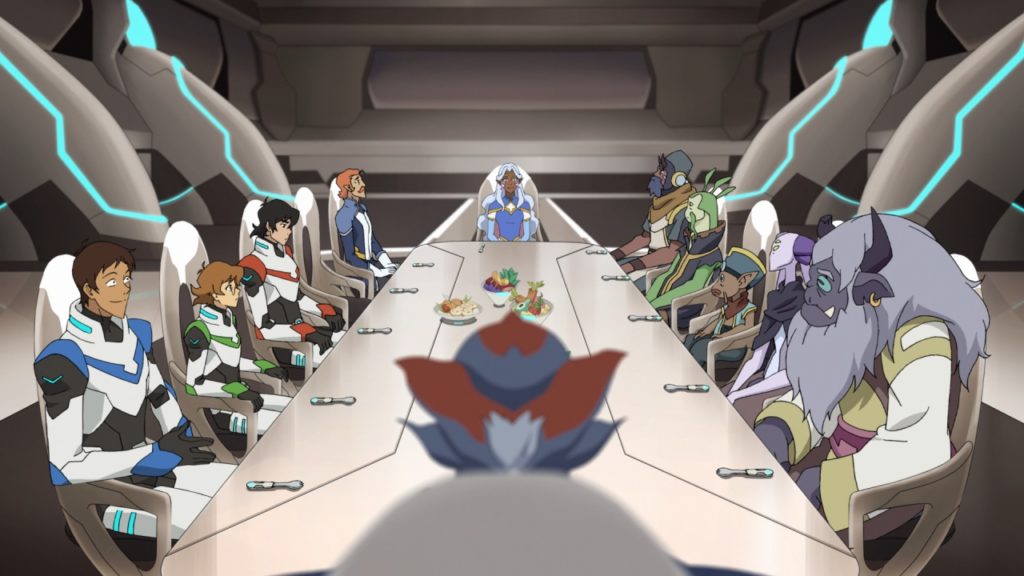
This card means a lot. Both a spiritual teacher, and connection with religions, and traditional actions, and any organizations, all sorts of serious things.
One way or another, in the plot this card is displayed as the beginning of the diplomatic activity of the paladins, all their communication with other races.
You can add the Blades of Marmora to The Hierophant, because they’re an organization that’s very difficult to get into, it’s devoted to underground activities and is associated with information – that is, with knowledge.
Equally important are the negative traits of The Hierophant, which also find a response in the plot. The purity of faith, party, teaching, blood, race – this is its professional headache. Its worst trait is complacency, intolerance and exceptional conviction of its own righteousness.
Lynching, the search for enemies of the people, the fight against infidels, the witch hunt, the tribunal, the auto da-fe – this is its gloomy bottom or black peak. Actually, this we definitely meet in the plot, and more than once. From the side of Allura. From the paladins. From the liberated races. This topic we’ll see many more times.
Another thing is that not everyone is ready to poke The Hierophant into its failures.
6. The Lovers
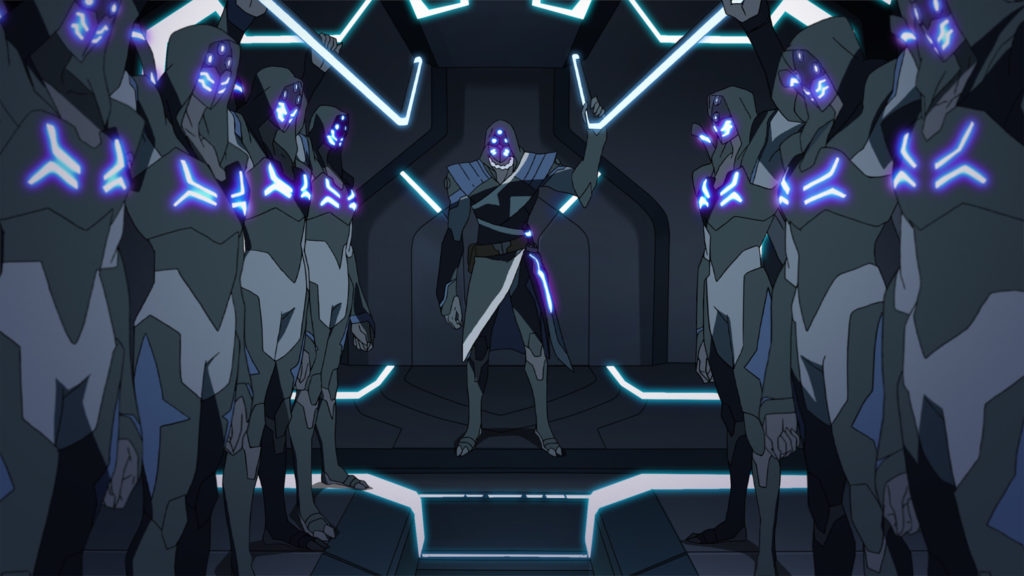
The card, despite its name, which could warm a shipper’s heart, is not about love. Well, it can be about love, but not in this case.
It may mean a situation of choice, not necessarily related to love. Then it means that one way or another we’ll have to make a decision, decisively and irrevocably, without leaving any loopholes for ourselves and taking on certain obligations. The Lovers depict a bold decision made by your heart. This is an internal knowledge of what is good and what is bad for you personally, which can’t be faked or deceived. You can’t listen to it, you can pretend that you don’t hear and don’t know it, you can act in defiance, but its tone doesn’t change.
In fact, the entire Keith’s story arc goes under this card. And the point is not in his possible romantic relationship.
The fact is that from the very moment he found out that he was a half-Galra, from the moment he began to do something with the Blades… a choice began to arise in front of him.
To take a step towards what really attracts him – the Blades, life with the Galra, inner freedom…
Or to stay with the paladins, in a place that he doesn’t like, but which he «must» take. As we all remember, he made a choice by his heart. He followed the call to work with the Blades.
Choices often confront heroes during narration. But these choices aren’t always truly right.
7. The Chariot
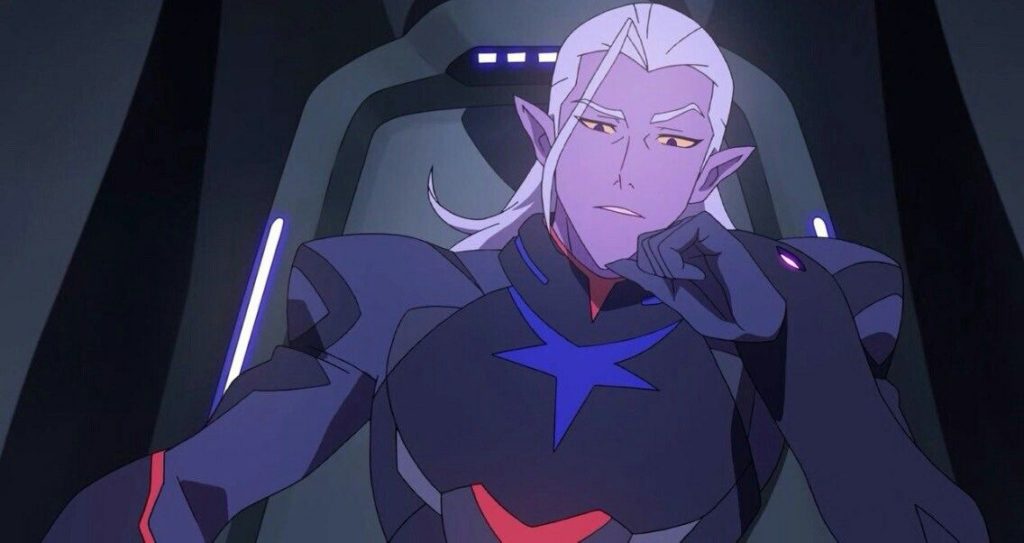

This card is a movement, it’s a pure impulse. At the same time, it’s control over one’s life, a clear understanding of what one wants and what needs to be achieved. Also, various journeys and adventures pass through it.
In fact, under The Chariot card, Lotor and his actions pass in many ways. Because he knows what he needs to do, he knows what he wants, and achieves this in all possible ways. He drives his chariot confidently, rarely doubts anything, and at first he succeeds a lot.
However, the farther the plot, the more we see that The Chariot doesn’t always go in the right direction and sometimes Lotor still loses control over it. This happens when it’s revealed that he built ships secretly from Zarkon. In general, very quickly he passes from a state of triumph and regular victories to a state where it’s difficult to do anything and he’s forced to rush to wherever his eyes look.
In part, The Chariot is also part of the character of Lotor, who’s used to keeping everything under control. At the same time, he’s not just a harsh Emperor, he’s an inspirer, he’s a traveler who never stays in one place and is always open to something new.
On the part of the paladins, The Chariot is their whole journey. Their entire movement is largely chaotic, albeit with an understanding of what needs to be done. They don’t always hold control, and then it carries them away – it carries them into serious, very serious problems.
8. Justice
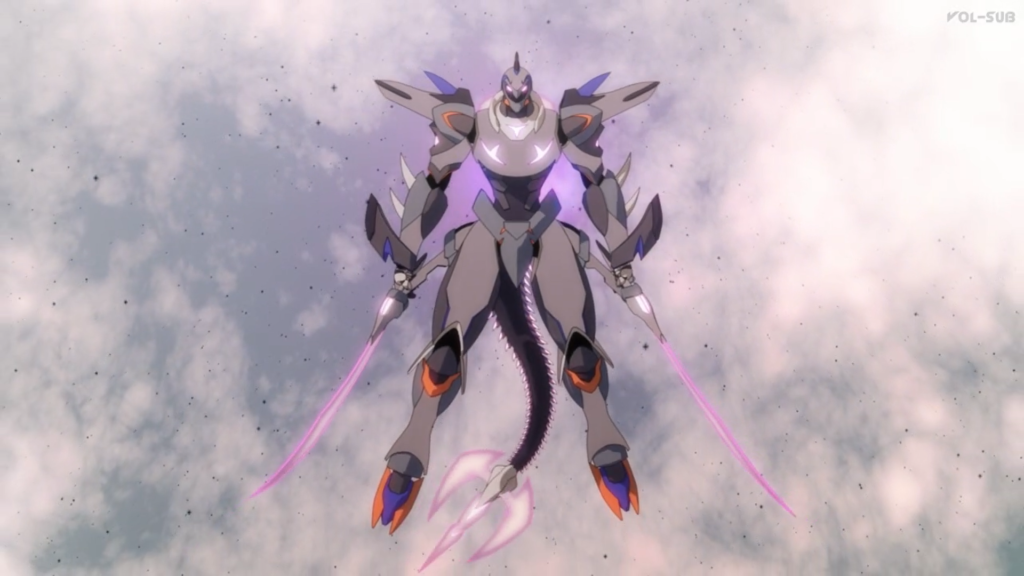
It’s a very important card. It connects the relationship between actions and consequences, taking responsibility for their actions, comprehending social laws, and the ability to make informed decisions. In other words, everything related to karma and responsibility is here.
And this same card is really important for the plot, for the development of the paladins. Because they often acted without thinking about the consequences, relying only on spontaneous, impulsive impulses. There are a lot of such examples, they go through the whole plot, but let’s take a few.
The first meeting of Lotor at the paladins took place under the direction of Keith, and he certainly doesn’t realize the lesson of Justice. He’s not used to following the rules, he’s not used to commanding, and all his actions will shout at them in the future – Lotor throws their Lions in all directions like kittens. If he would like to – he would easily kill them.
In many ways, Lotor’s interaction with the paladins goes under the flag of Justice. More precisely, its non-compliance.
The paladins are going to give the prince into the hands of Zarkon – and immediately receive the consequences of their incorrect decision, that is, fraud and further problems.
But the most important thing that our heroes do, which very strongly comes around to them in the future, happens in S6. On the part of Allura, this is a belief in the words of Romelle and an instant decision to punish Lotor, on the part of the paladins – it’s the decision to fight Lotor. One way or another, in the future, their wrong actions will be scourged by the Earth, which, due to their loss, will be captured. The empire is fragmented due to the disappearance of Lotor – and these are also serious consequences.
It’s difficult to say whether the characters learned a lesson in what Justice provides. They at least tried.
And you probably would have understood the whole point if… yes, yes, right, if not for the broken S8.
We’ll return to this topic. Because the amendments that were made to the plot… contributed to its complete destruction.
9. The Hermit
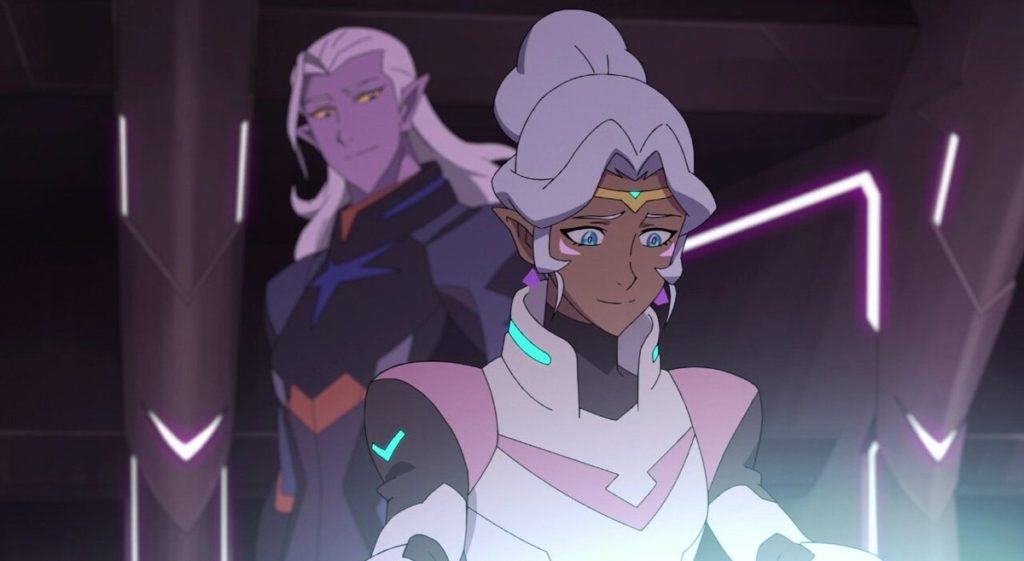
A card of self-development, immersion in oneself and the study of one’s own abilities. The card is also associated with receiving magic gifts that will help the hero fulfill his mission.
One way or another, it’s this card that suits Allura.
She not only differs from the others; the further in the plot, the more distant she is from the others, and the more she plunges into self-knowledge to understand what exactly happens to her, who she is and what she needs – not for everyone around, but for herself.
A gift comes to her through Oriande, when she comprehends her essence in many ways. Then, a «teacher» comes to the rescue – in this case, more likely a «guide», who is Lotor. He could instruct her and help her get to the state of the Empress, which she needed so much. But the story didn’t complete the training of Allura. The Hermit’s path hasn’t been completed. And this is another fail of the changed plot.
Also, this card suits Keith. His choice has already been mentioned earlier, but one way or another, he also went through internal growth in order to find his real self. His Galran self.
Also, the path of the Haggar-Honevra is important. Because she passes through The Hermit at a time when she gradually regains her memories and herself. She again remembers herself, her personality, her son. And she also receives gifts having passed through Oriande.
The development path goes absolutely for all characters. I described only those that have a serious impact on the plot.
10. Wheel of Fortune

I like this card. It carries the inevitability of development, random events, it helps to accept oneself, and also reminds us that everything will end one way or another. That’s why you need to continue to move on and seize the moment. But the most important thing is fate and events, especially influencing what’s happening.
In fact, the most significant events in the plot take place along the Wheel of Fortune. This is the victory of the paladins over Zarkon, then – the battle of Lotor with Zarkon and his victory over him, the rise of Lotor as emperor, the disappearance of Lotor and the capture of the Earth. And also other events… that were supposed to be, but didn’t happen. For example, the return of Lotor. The salvation of the universe is real, not what was provided in the series. One way or another… development stopped and sticks began to be inserted into the wheel.
But its influence doesn’t become smaller.
11. Strength
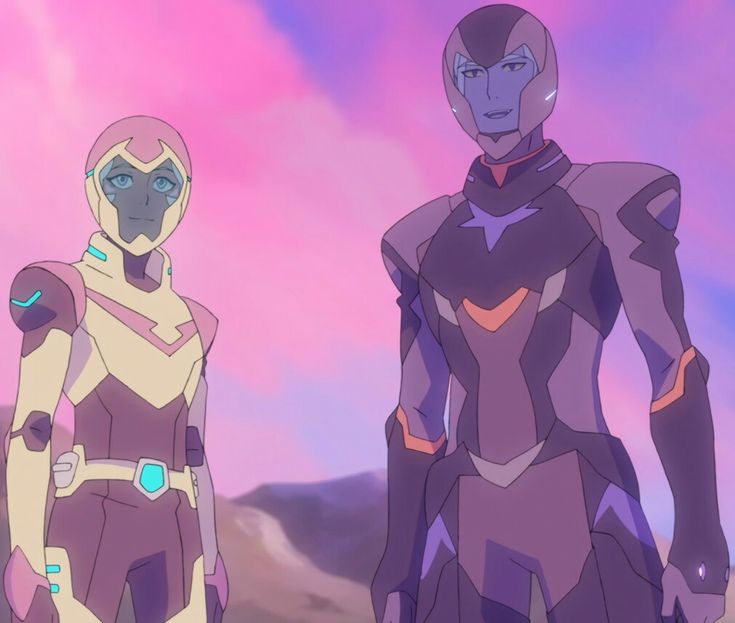
This card depicts reconciliation and integration of opposites within the hero: male and female, mind and emotions, instincts and rational principles, consciousness and the unconscious.
This card follows all the way of Keith. His decision to be with the Blades, the fact that in the end he became a better leader than he was at first. Because he was reconciled with himself. Because he found strength in himself.
This is also the path of Allura. Its very important part, which was supposed to be decisive. This is the alliance of Allura and Lotor. The way they would balance each other, complementing, improving, not by force, but with the help of soft influence. Strength is never about physical strength. This is primarily strength of mind and gentleness at the same time. The ability to tame the beast, which doesn’t allow to move on.
This was clearly an important development in the fate of Lotor. Because he contains the Galran teaching, their eternal «victory or death» is fixed in his mind. And that bothers him. This doesn’t allow him to fully reveal. In the future, he would surely be able to come to a harmony of the Altean and Galran principles in himself. There was no opportunity. This opportunity has been missed.
Allura also had to cope with her aggressiveness and intolerance, to come to a merger of the two parts. Well. Partly she did it. But because of all the same interference in the story – not to the end. Development hasn’t been fully completed. She didn’t come to harmony in her soul.
12. The Hanged Man

Important card. Special card. It carries a loss of meaning and purpose of the path, awareness of hopelessness in the face of future death, readiness for self-sacrifice. Everything connected with the voluntary sacrifice goes through this card.
Well, the plot has everything connected with it.
If the Galra go under The Emperor’s card, then under The Hanged Man’s one there’s the entire Altean race. In the plot, they’re in a suspended position – in a colony, with the danger that they’ll be found and destroyed, as well as with great willingness to sacrifice their lives for the good of society. Voluntary sacrifice is what they do all the time. Since there’s every reason to believe that the Alteans readily went to possible death when Lotor called for them, this fits even more precisely into the concept of The Hanged Man.
Ulaz, who literally sacrificed his life to help the paladins, also suits here.
The same card suits Allura. And also – Honerva. Not surprising, given that they’re both Alteans. Their sacrifice at the end is a sacrifice for salvation.
Unnecessary and stupid sacrifice, but still we have what we have.
13. Death
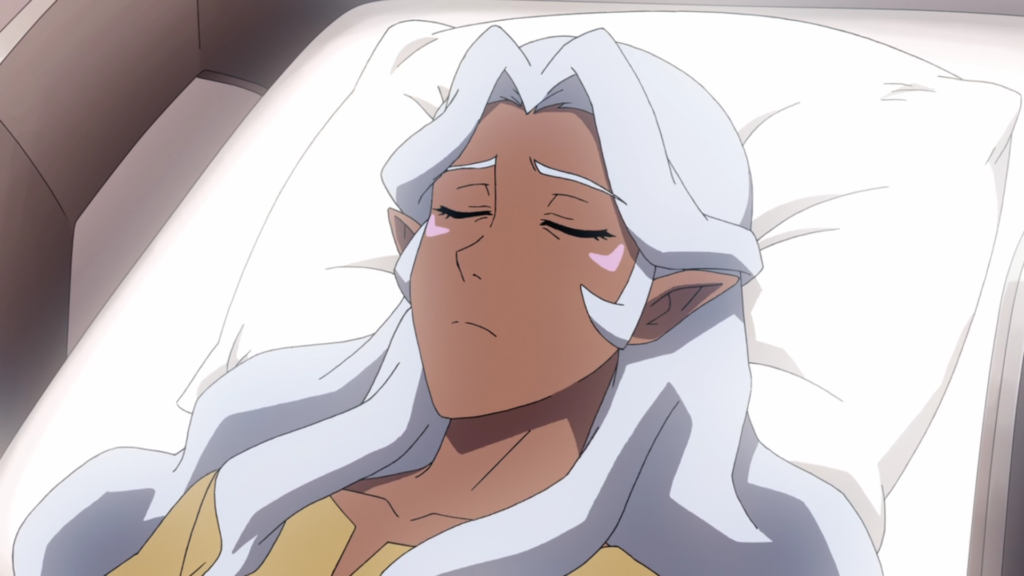
Despite the creepy name, this card doesn’t carry a real negative. Death is a card of transformation.
Although it can mean literal death, which is happening all the time in the series. The death of an almost entire race of Alteans. Permanent deaths of the Galra’s victims and the Galra themselves.
But much more important are the «death» of Lotor, who stayed in the Rift, and the immediately subsequent «death» of Allura, who hasn’t died yet, but she’s undergoing a serious transformation during her lifetime. She literally dies in her soul, being on Earth. It’s something like a limb for her, where she wanders, trying to understand what’s happening.
14. Temperance
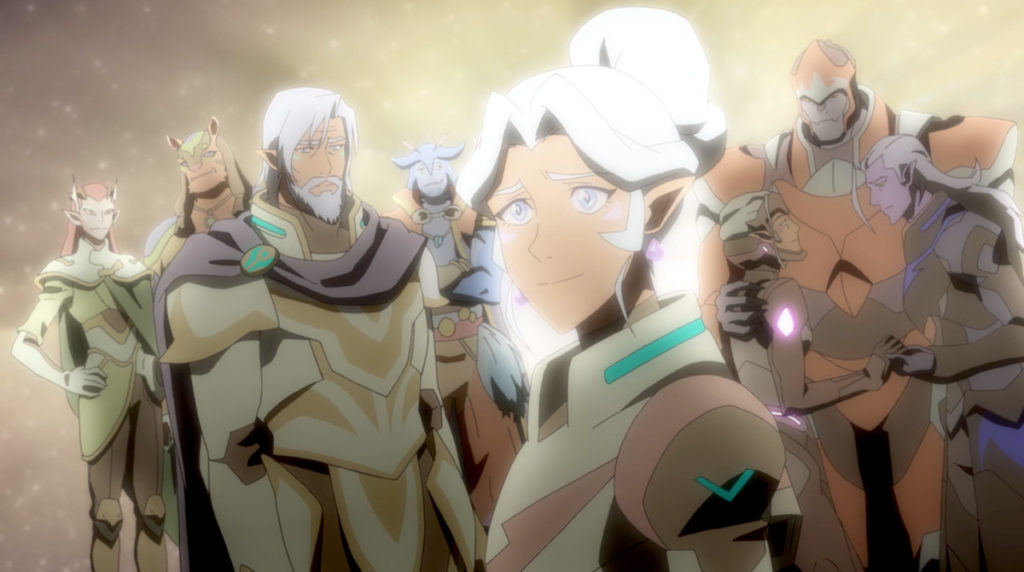
In general, this card depicts inner harmony. And it always goes after the Death card. When you go through perdition in order to find the radiance of the soul and happiness.
One way or another, the story arc of Allura continues under this card, who was supposed to come to harmony on Earth, figure out herself, realize where she was wrong and so on. This card differs from The Hermit: it occurs precisely after the advent of trouble and a certain depression.
According to this card, life comes after death. We saw this at the end of S8, when Allura sacrificed herself. That there’s afterlife for her. However, in a normal plot this is not the end.
This is just the beginning.
15. The Devil
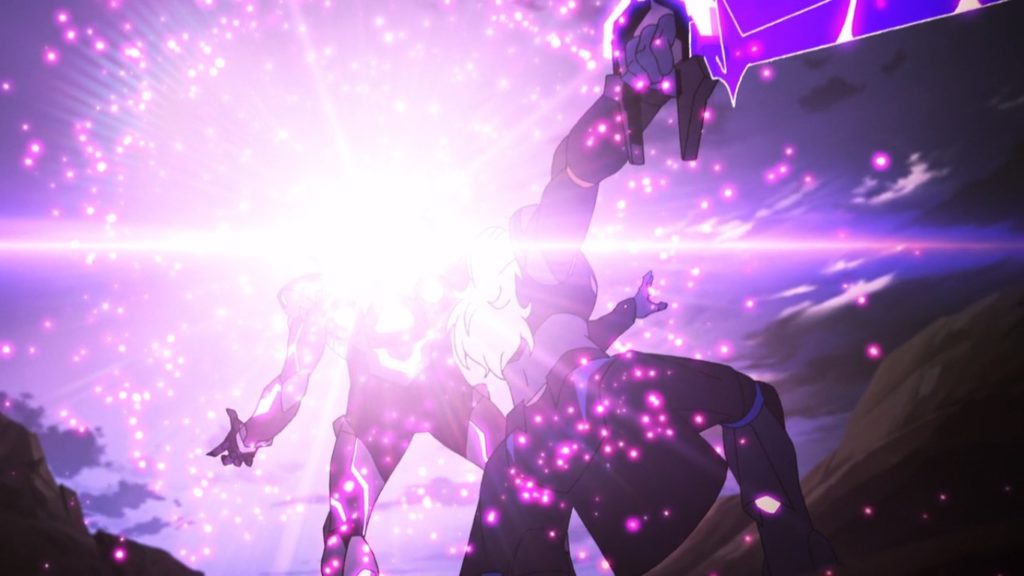
This card carries a meeting with internal demons, suppressed by desires, as well as with an antagonist who acts as the external carrier of the Shadow of the Hero.
One way or another, Lotor’s life goes under this card. His Shadow is always in front of him – this is Zarkon. At first, he doesn’t fight with him, but tries to reconcile, what we see in his childhood and youth, but not all demons are subject to taming, and Lotor quickly realizes that it’s impossible to reconcile with him. Rather, it can be possible… but he doesn’t want this.
So our prince begins the battle with his father, with his Devil, whose echoes are also found in himself – in the form of a severe Galra upbringing. Lotor isn’t a bad person, he goes as far as possible from what his father did, but one way or another, the dark sides in him manifest themselves from time to time. Take, for example, his actions after the battle with Throk, when the exile to the most distant post was a manifestation of mercy.
In any case, the most important meeting of Lotor and his Shadow occurs when he encounters his father and defeats him. An important detail happens at that moment. The sun is falling on his face – which further confirms this way out of darkness to the light that he committed.
Each character has its dark sides. Pidge has endless egoism, she always puts herself and her family in the first place, and in the series there was no necessary progress further, she didn’t outgrow it and remained together with her demons.
Keith is too hot-tempered, his hasty decisions ruin a lot, and he only partially moved away from this to the very end, but… not completely. Perhaps it’s impossible, after all, it’s part of his character.
The dark side of Allura is her bias, her post-traumatic xenophobia… and also – a hot temper and impulsivity. Take, for example, how she pilots her Lion and how she fights. Over time, she becomes more tolerant, but still doesn’t get a full development, and her darkness remains with her, continuing to poison her life.
Again, everyone has negative aspects, but it doesn’t make sense to describe it for a long time, everyone understands everything.
16. The Tower
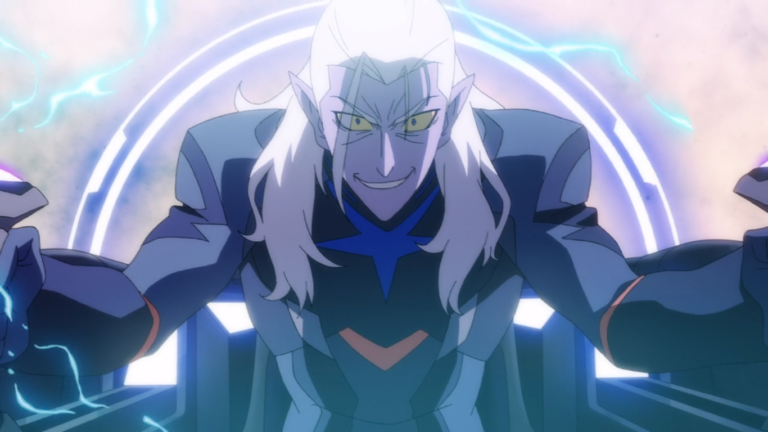

My most unlikable card, but very important one.
The Tower is the collapse of obsolete foundations and plans, the resolution of an obsolete value system.
The first moment, perhaps, is the story about Zarkon in the past. This has already destroyed past guesses, thoughts and the belief that he’s actually «pure evil».
Next is Zarkon’s hunt for Lotor.
Then comes the betrayal, when the generals betray Lotor and thereby destroy the world familiar to him.
Next event is Allura discovering that Lotor is half Altean. This becomes the collapse of the past plan of thoughts for her. And now everything is moving into a new direction.
And most importantly… there are even three events in a row: this is Romelle’s story, the battle with Lotor and the understanding that Shiro had been a clone for a long time.
In general, there’s nothing to say. Some events of this card led to a successful resolution. And some destroyed it all. That’s why it’s The Tower.
It leaves nothing behind.
17. The Star
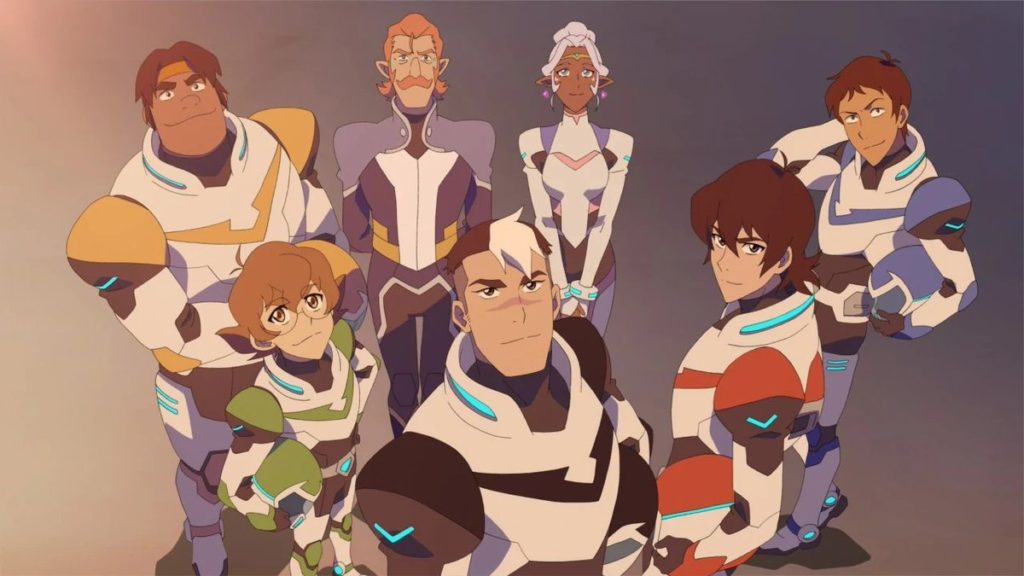
…well, something still remains, and that’s good.
The Star card is hope in its purest form. These are dreams and fantasies, a certain fragility, which may eventually manifest in life, or may not appear. It exists and doesn’t exist at the same time.
Hope really shines on the paladins throughout the seasons. Moreover, it shines both to Lotor and Honerva.
Everyone has different hopes and dreams, but one way or another, everyone has the belief that they will succeed in doing what they want.
To save the universe. To find a safe and convenient source of quintessence. To get the son back.
Not all hopes are justified.
But all the characters continue to believe.
It also describes the events after S6. When everything around gives hope. The hope that Lotor will return to the story.
Again… unfortunately, not all hopes are justified. Sometimes they’re destroyed by someone else’s intervention.
18. The Moon
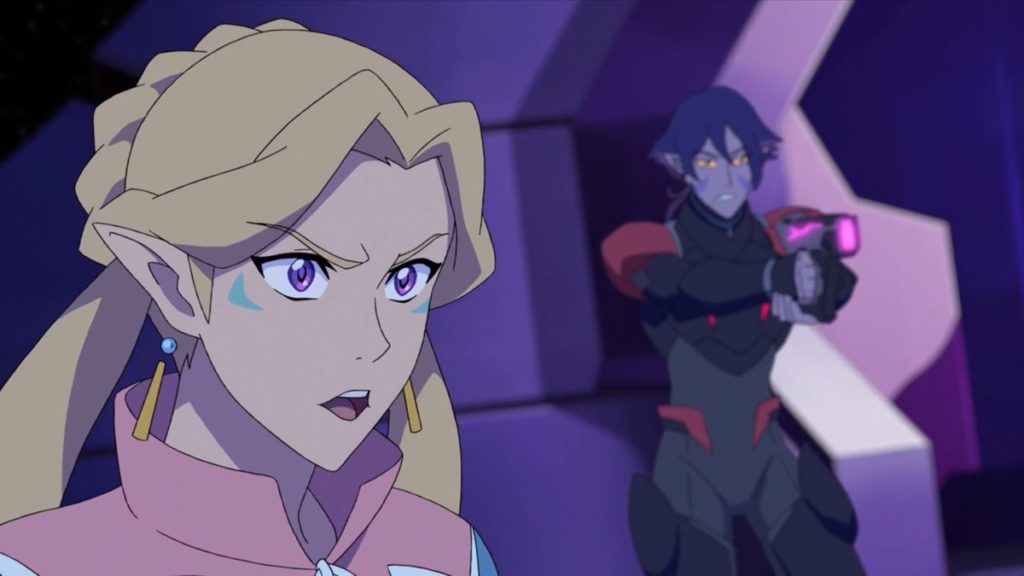
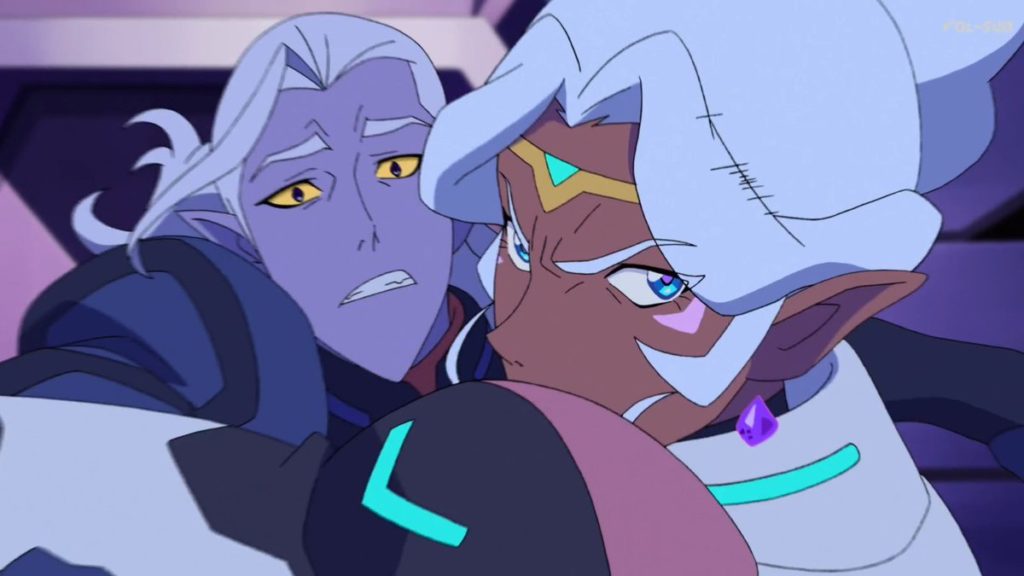
And again, we have a mystery card. But it’s much deeper, it’s the mystery hidden so far that only few could reach. Secrets of The High Priestess are always revealed, but secrets of The Moon – almost never.
Also, this card is responsible for fears and wandering in captivity of illusions. And for deceit too, which is important.
This card mainly refers to the situation with Lotor and the colony. This is a dangerous secret that shouldn’t have surfaced, which created a huge amount of fears – in just a few seconds – and destroyed everything. But much more important is that under this card goes… Romelle. A dark horse, in the words of which there are too many suspicious omissions, and even more in her behavior. A snake hiding under a pretty appearance, pretending to be a victim and a fool. She suits The Moon. And now her secret would have been revealed in the future… if not for the changes in the plot.
19. The Sun
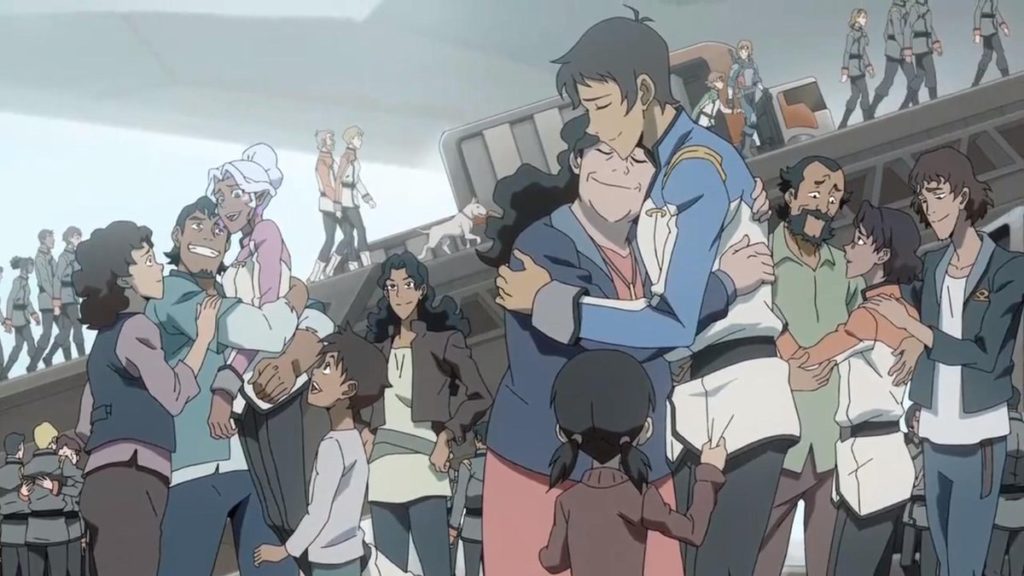
This card, in fact, only partially appears in the story, as well as subsequent ones. Rather, it’s present, but… it’s expressed incorrectly. Because of all the same changes.
The Sun is the first card of rebirth. And also it means happiness, harmony, the beginning of the end of the path and the final victory.
One way or another, it was The Sun that had to fully manifest itself in the last season.
We have already seen its power – when Allura brought Lance back to life. In the same way, she could bring Lotor back to life, which is exactly what the plot was supposed to happen. Reunion.
And next comes…
20. Judgment
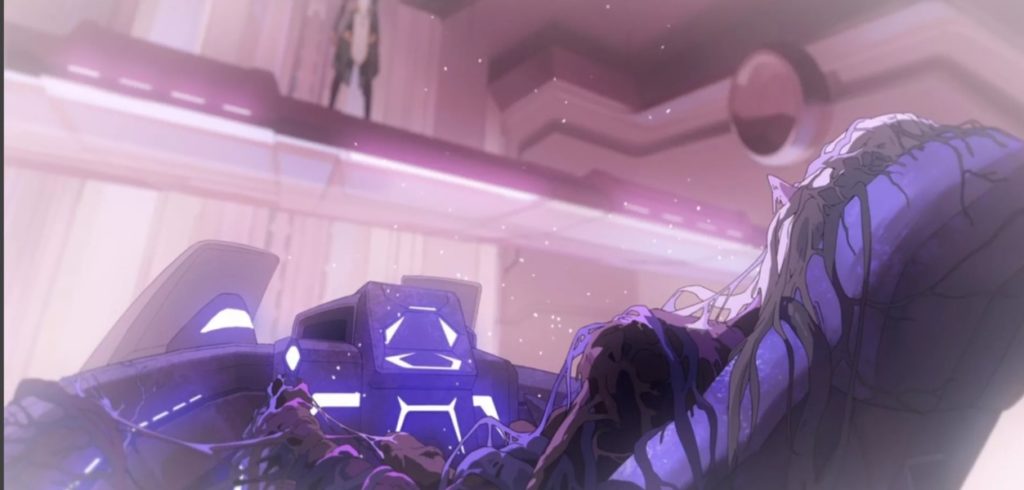
Oh, what a beautiful card, twofold and amazing! How much was to happen in Voltron!
This card means healing, transformation, removal of all masks. It continues the theme of The Sun, being its final chord. Masks are dropped, and all things open in their true light.
At the end of the story, or rather, closer to its end, Romelle was to be exposed, and the return of Lotor took place, and the discovery of the true goals of Honerva.
But as a result, we have a completely dead Lotor – which, however, also fits into the concept of Judgment, which also means ultimate death. But given all the past signs – the card wasn’t fully used. What was about to happen didn’t happend.
21. The World
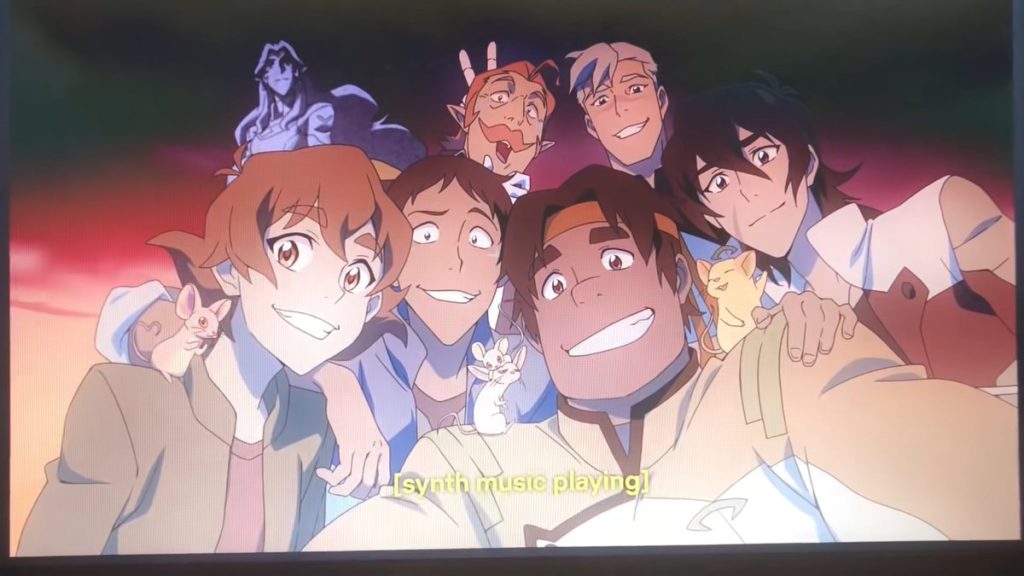
The last card completing the Hero’s Jounrey. Homecoming. The completion of the plot. The end of all, achieving goals.We all know how VLD ended. The «happy ending», or rather, what was disguised as it, can only be called an inverted World.The storylines didn’t reach the end. The story arcs of the characters weren’t finished.The Hero’s Journey wasn’t completed. It was rudely interrupted.As if there was one straight line at the end of which someone drew a bunch of strange lines.The World doesn’t mean a complete end. It symbolizes the beginning of a new story. Each of the characters went in different directions, each with their own path.If they all went through the journey that was laid down in this story, as in all other stories like this, they would be really happy. A new era would come for them. A new life. But the broken plot left them with the severity of the past. The plot threw them, spat out, like unnecessary details.The plot grind the lives and arcs of Lotor, Allura, Lance and Shiro. It changed the lives of Pidge, Hunk and Keith in the negative direction.Everything that happened was wrong. Because the Hero’s Journey is always the same.Only the heroes themselves differ… and the details. And this journey didn’t reach the end. Real development slowed down somewhere.So, this story isn’t complete. What we’re shown is an unfinished stub.We still love this story. Even as it is.But actually… we all love this story as it should have been.
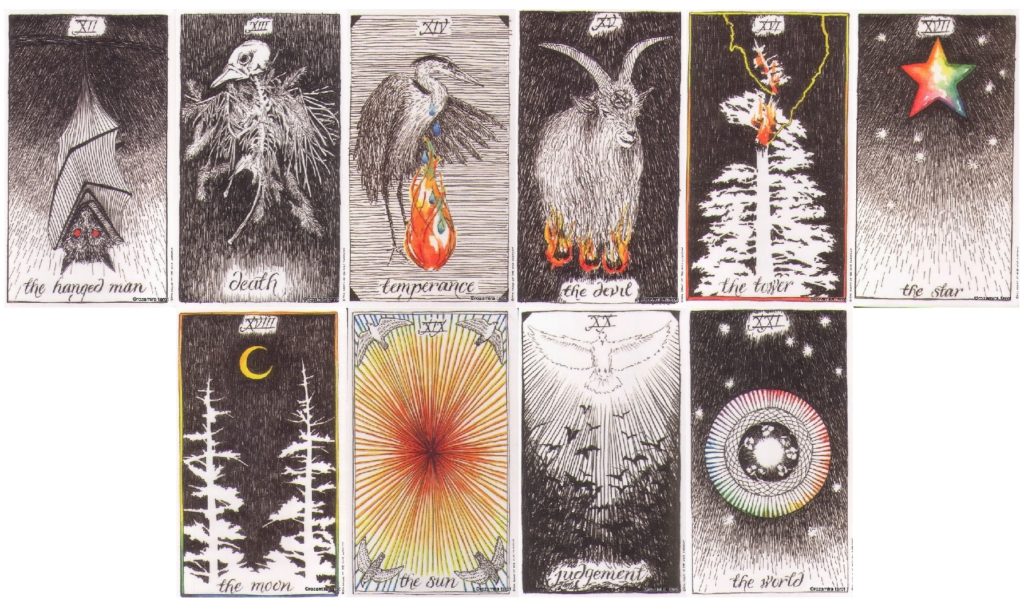
So, we went through the Hero’s Journey through the 22 Major Tarot.
And remember, cards exist not only for divination.Cards are a unique system for exploring the world, psychology and much more.
